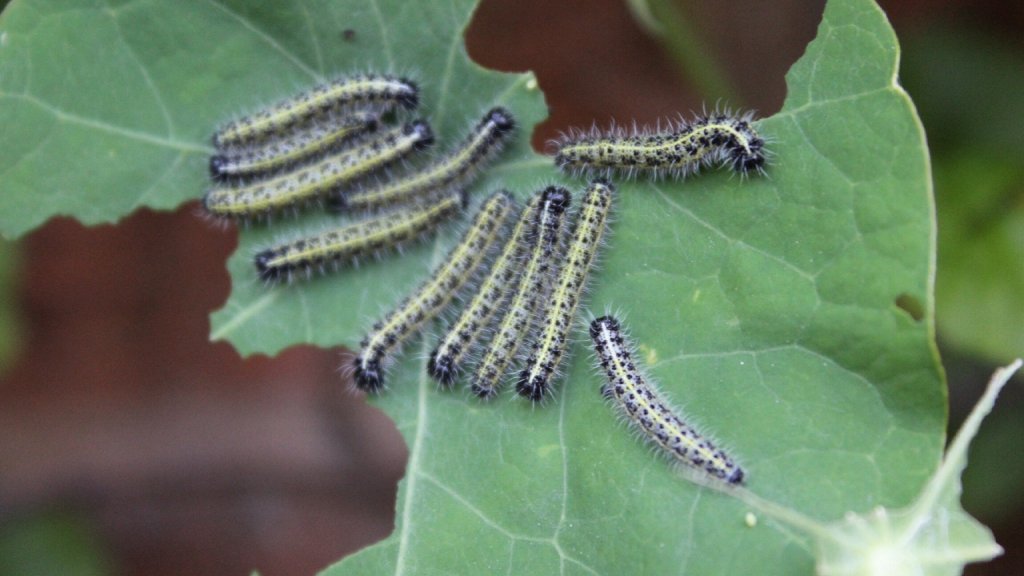How To Prevent Caterpillars: Controlling Caterpillars In The Garden
Caterpillars show up in gardens in late summer and early fall. Only take extreme measures if you feel they’re being too destructive. Learn more here.


Caterpillars often show up in our gardens around late summer and early fall. They can ravage certain leaves and vegetables, but they’ll often stick to one kind of plant, and they also have plenty of natural predators. Yes, they’ll eat holes in your leaves, but only take extreme measures if you feel they’re being too destructive or there are too many of them.
About Caterpillars in the Garden
Caterpillars can pose a conundrum for gardeners. Exploring how to get rid of caterpillars is an interesting study. We want to prevent caterpillars from ruining our vegetables and munching on our perfect leaves and it’s not always easy to see them, so controlling caterpillars can be a challenge. Caterpillars are simply larvae that are waiting to transform into moths and butterflies. They are often very hungry guests in the garden, however unwelcome.
There are thousands of caterpillars that thrive in different regions. We’ll explore the caterpillars that are most commonly found in the garden here. If you see a caterpillar in your garden that isn’t mentioned in this article, we strongly suggest you contact your local extension service for info and advice. Here are a few caterpillars you may encounter having a food fest in your garden:
- Cabbage loopers: These caterpillars are pale green with stripes on their backs. They love to eat garden greens like chard, kale, and lettuce. You may see their tiny white round eggs attached to the undersides of your vegetable plants’ lower leaves. Cabbage loopers can get as long as an inch and a half (4 cm.). They’ll turn into moths that have wings with silver spots.
- Hornworms: The hornworm’s favorite food is your tomato plant, but you may see them on potato, eggplant, and pepper plants as well. They are large, green, and sport a “horn” at the end of their bodies. However, they’re big enough to see and easy to pluck from your plants. They can devastate a vegetable plant in fairly short order.
- Cutworms: These ruthless creatures will eat your new baby seedlings right down to their base. They come in different colors, depending upon your region, and they hide during the day. Some varieties feast on trees as well. Their name is due to their habit of curling around the stem of a plant and cutting it off just above the surface of the soil. Tender seedlings are the most at risk. Adult moths from cutworms are harmless.
- Armyworms: Related to the cutworm, it would be a shame to leave these guys out of the discussion. Armyworms are either green or dark colored with a yellow stripe. They like grasses.
- Corn Earworm: These unsightly creatures vary in color from brown to pink or black, with dark stripes on their backs and a yellow head. Corn earworms can grow up to 2 inches (5 cm.). They will feed on your corn crop’s silk and leaves as they grow and, if you don’t discover and manage them, their larvae can eventually bore into the tips of the corn cobs. Their eggs are tiny, flat, and yellow or brown.
Controlling Caterpillars in the Garden
Caterpillars have quite a few natural predators like parasitic flies and wasps that often keep them from over populating. Birds, assassin bugs, lacewings, predaceous ground beetles, and spiders also enjoy feasting on caterpillars. There are several things we can do as well to keep caterpillars out. Here are some methods:
- Pluck the caterpillars off your plants and drop them into a bucket of soapy water. Be vigilant with your plants and look for eggs, as well as caterpillars. Some eggs can be removed with a flush of water, others may respond to a treatment like neem oil or homemade insecticide.
- Place cardboard or tin foil at the base of your plants to repel caterpillars. This can be an effective deterrent for some varieties. Keep the ground around your plants free from debris where eggs might hide.
- Purchase beneficial insects. Parasitic wasps don’t sting people and will happily prey on caterpillars, using the caterpillar’s body as a nest for their eggs. You can see evidence of parasitic wasps in clusters of eggs that look almost exactly like white rice. If you can, let them be.
- Use a microbial insecticide that won’t hurt bees, beneficial insects, or wildlife. It’s called bacillus thuringiensis or BTK. It kills only caterpillars when they eat leaves that have been treated. If you are expecting caterpillars or see signs of them, treat your plants in advance. Other organic insecticides for caterpillar control include those containing the active ingredient Bt, spinosad, pyrethrin, neem oil, or azadirachtin.
Always try to avoid insecticides that might kill beneficial insects and pollinators like bees and butterflies. We need them for a healthy planet.
Sign up for the Gardening Know How newsletter today and receive a free copy of our e-book "How to Grow Delicious Tomatoes".

Caroline Bloomfield is Manager of Marketing Communications at Gardening Know How since 2019. A northwest native, she has resided and gardened in multiple zones in the U.S. and is currently at home in Bandon, Oregon. Writing and editing for various publications since 1998, her BA in American Studies from Southern Maine University includes an emphasis in English. She was raised in California by avid gardeners and continues to enjoy the natural world with an appreciation for the concepts of sustainability and organic care for the planet.